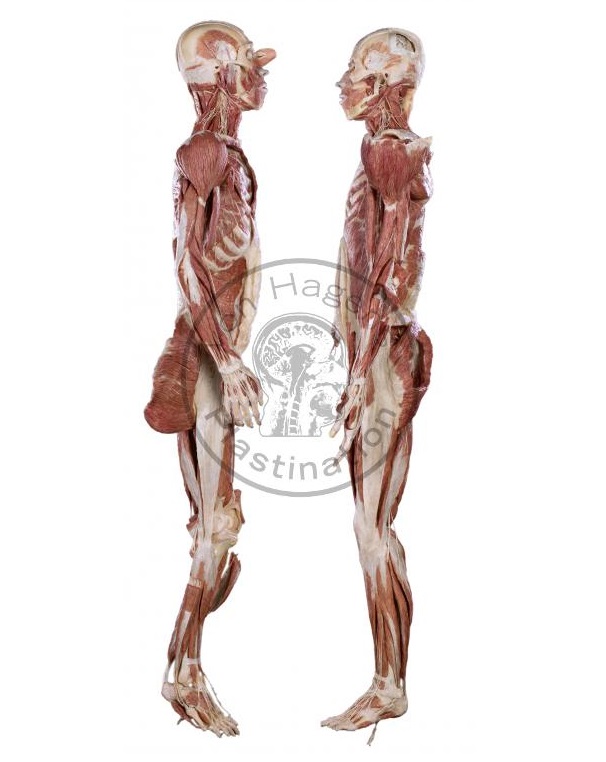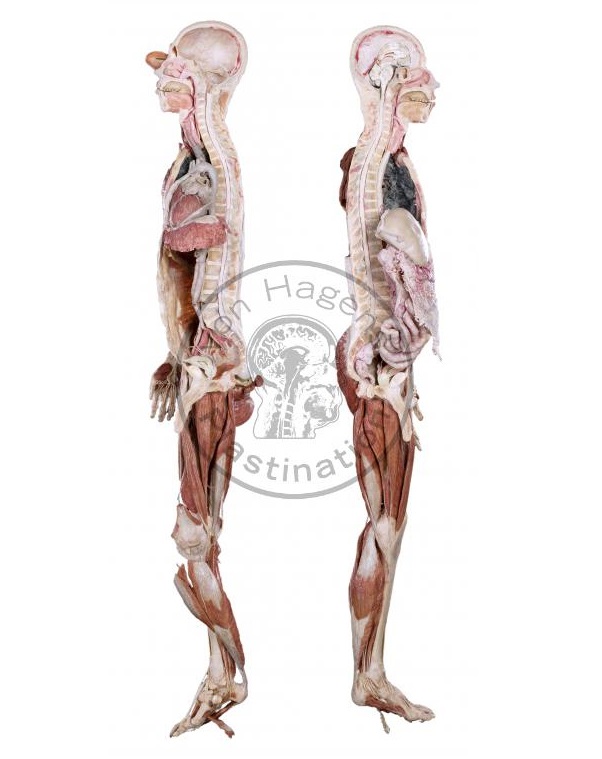Body No. 2 is adjusted close to anatomical position. The entire human body is divided at the midsagittal plane to expose the internal body cavities along with various organs. The organs can be presented as a whole block in natural position, or separated systematically. The circulatory and nervous system will be displayed on either side in full.
1. Head and Neck
- The muscles of facial expression, superficial muscles of the triangles of the neck are dissected on one side
- On the other side, muscles of mastication are shown through deep facial dissection, and deeper layers of the neck are displayed
- Both sides show necessary structures, including main arteries and nerves; some important veins can be shown also
- The brain occupies half of the cranial cavity, while the other side shows the structures of the intracranial space, including cranial nerves and folds of Dura Mater
2. Thorax, Abdomen and Pelvis
- Systematically separated on one side, the digestive tract can be shown in physiological position as a continuous passageway with accessory organs, along with one part of the respiratory system
- On the other side the urinary and reproductive organs are represented at the areas of their natural location
3. Extremities
- Extremities are dissected so that each half shows different levels of musculature, and major arteries and nerves will be present both superficially and deep
- Other structures of the locomotive system such as joints and ligaments are demonstrated
Silicone Plastinates are plastinated specimens from real human bodies. They include almost every body part from organs and nerve systems to whole body specimen.
Silicone Plastinates have a high didactical value and are particularly suitable for universities and museums. Their unique three-dimensional complexity illustrates the intricate structure of the musculoskeletal system and the inner organs as well as their relative position to each other. These specimens keep their natural form and thus allow students and professionals to examine structures and details of the body better than any model.
More than 400 teaching institutions around the world use plastinated specimens for teaching.
Silicone Plastinates are odorless and not harmful to health even when handling without gloves. They are durable, flexible, authentic, do not shrink. Anatomy specialists dissect our specimen with painstaking detail and anatomical precision to assure accuracy and highest quality.
All Plastinates are produced in Germany, near Berlin. Each Plastinate is handmade and produced under strict ethical guidelines.





